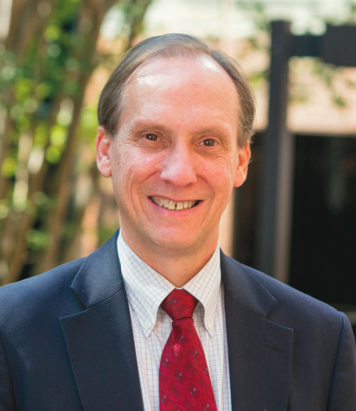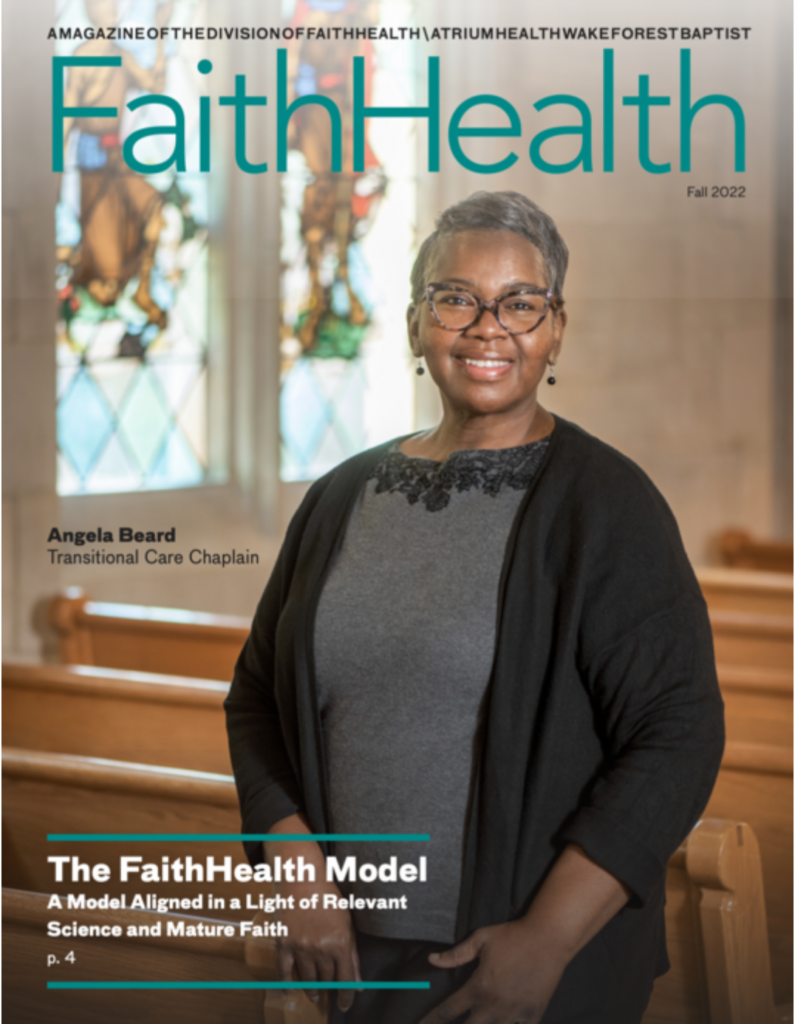By Jay Foster
Jay Foster served as Director of FaithHealth Chaplaincy and Clinical Ministries. He is a board-certified chaplain and educator. He was recently recruited to the position of Vice President of Spiritual Care Chaplaincy and Congregational Partnerships with Indiana University Health System.
Traditional and evolving roles. What a chaplain does really is attend to issues of meaning and purpose in people’s lives. A chaplain is specially trained to work people of all faiths or of no faith to be with them and listen to them as they work with issues of faith, concerns, and questions they have. In the hospital that also looks like some very specific ways: We’re there when someone is dying. We are there when there’s a crisis. We’re there to help with things like educational and living wills and advance directives.
I’d been a hospital chaplain for 25 years and I thought I’d knew something about it. With the advent of FaithHealth about five years ago Gary Gunderson said something wonderfully challenging to me: people come to the hospital for treatment but they go home to get well. To build relationships with congregations and community resources ahead of discharge and give an actual name to somebody who goes out the door, that’s effective.
Bridging to the community. The idea developed of a chaplain who has one foot firmly in a clinic and a bridge to a community resources outside that clinic. We began placing some our chaplaincy residents in clinics, starting with the Downtown Health Plaza (DHP). DHP sees anybody who wants basic medical care, folks who are in need. So we placed a resident there who works with a team of physician, social worker, sociologist, to meet the spiritual needs of patients and make connections.
In the last four years the institution has acquired or built four community hospitals. And from the beginning the division decided that it would be good for chaplain to be the, in some ways, the face of FaithHealth in that community. If chaplaincy is going to thrive in the next century, it’s going to be because we are able to really do this well. Where we provide spiritual care in the clinic and for those who are really vulnerable help provide that resource in the community. So our chaplains in the smaller community hospitals divide their time between spiritual care and community engagement, finding those congregations and community resources that meet needs, and building referral networks and relationships that connect.
Boundaries. Efforts are being made within FaithHealth to figure out where do we set a boundary and when do we say no to someone. A major gift of the chaplain is to provide spiritual care. If we say no too early to a referral, does that impinge upon that spiritual care conversation? Or is it our job to take all the referrals that come, provide spiritual care, try to meet that referral and if we are not able to meet be able to say, I’m praying for you, I care for you, even though I can’t meet these social determining needs? So that’s at least one way that I’m struggling with that boundary.

